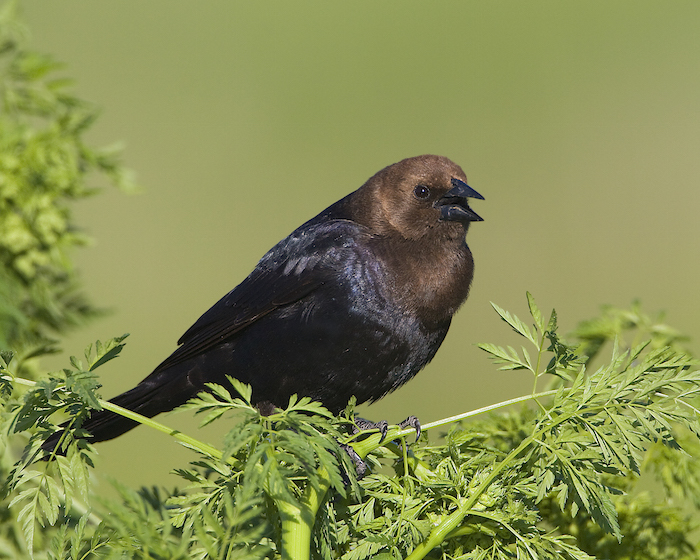
Brown-headed Cowbird Male photo courtesy David Bogener
Some folks have difficulty maintaining a charitable attitude toward cowbirds, and it’s an understandable challenge.
The birds aren’t especially ugly or messy or anything like that. You can see them herding with other blackbirds. They’re the slightly smaller ones—the females a muted mouse-gray, the males a glossy black with the brown heads that give them their name: brown-headed cowbirds.
Flapping overhead they cry a distinctive zeet-zeet-zeeet, rising on the third syllable. Or you may see several males at a treetop, chortling in the morning sun, or on a park lawn bowing to the females in spread-winged courtship.
Formerly they followed bison, feeding on grains and insects that the grazers stirred up. Now they often associate with cattle, where they are joined by other blackbirds.
But bison were ramblers, and cowbirds wandered with them; and wandering is not conducive to child-rearing. Cowbirds adapted.
They learned to watch for available homes where they could leave their eggs for stable fostering. In as little as an open minute, a mother cowbird can lay her egg in another’s nest, preferably one where incubation has not yet begun. She may quickly devour an existing egg there, or, if some nestlings have already hatched, toss them out to die, promoting a new nesting attempt by the host with her own egg as the oldest. The cowbird story grows no less brutish from there.
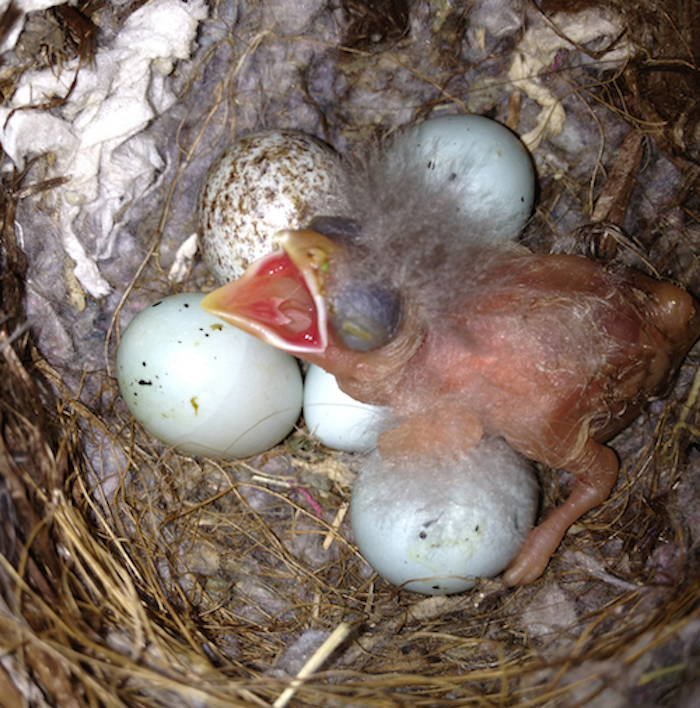
House Finch nest with Brown-headed Cowbird Egg and Hatched Cowbird Chick
Often laid into nests with smaller eggs, cowbirds usually hatch first and bigger than their foster siblings. Scarcely functional themselves, they may, like their mothers, overtly push or yank their unfeathered nestmates over the edge to certain death. This behavior, however, is rare; cowbirds grow most quickly along with a couple nestmates. Their collective begging seems to motivate parental food deliveries, and the cowbird then uses its dominating bulk and gaping red mouth to gather the lion’s share. Its out-sized appetite can leave the smaller nestlings undernourished and weakling.
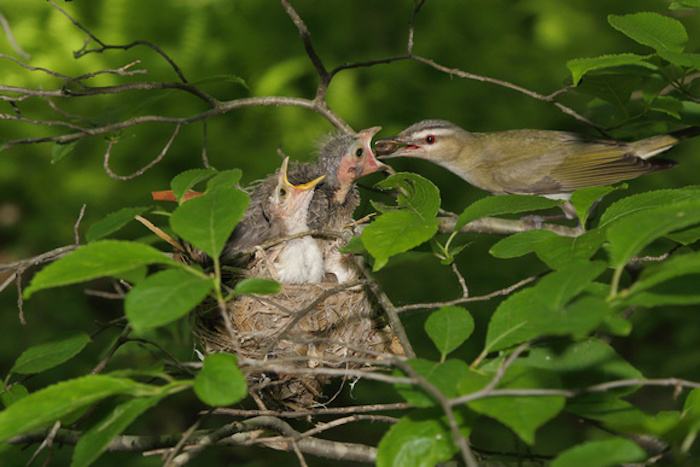
Brown-headed Cowbird chick being fed by Red-eyed Vireo
It’s a problem in the nest, and becomes a problem in whole bird communities. Today’s cattle and deforested land are more widespread than bison and prairies were, and cowbirds have expanded their range accordingly. In new lands they have found new species to raise their young. Many of the new hosts end up raising just a cowbird. The nest parasites survive; the hosts decline.
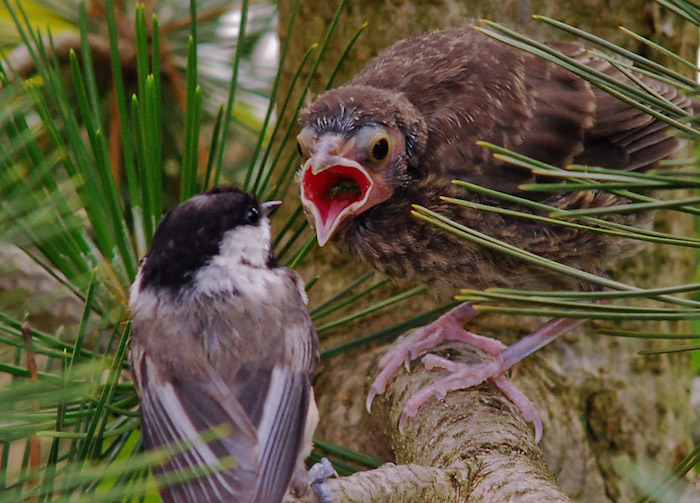
Brown-headed Cowbird chick being fed by Chickadee
Freed of the work of child-rearing, a cowbird can lay three dozen eggs or more every year, each in a separate nest. Some host species do not distinguish the cowbird egg from their own. Indeed, many cowbirds seem to specialize in particular hosts, mimicking the coloring of exactly those eggs.
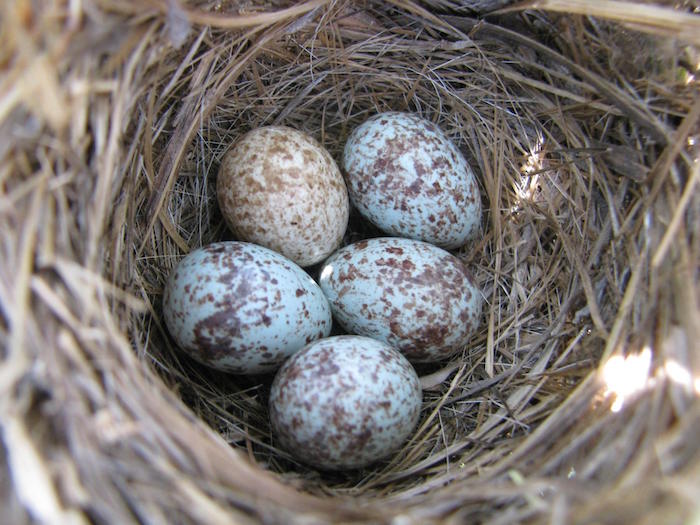
Song Sparrow nest with Cowbird egg
Many species do, however, recognize the parasite egg. Larger birds are sometimes able to discard or puncture cowbird eggs and successfully raise their own. But this resistance is discouraged by cowbirds’ “mafia” behavior. Adult cowbirds are known to pillage nests from which their eggs have been removed.
Smaller birds avoid such bullying by being too small to throw the foreign egg out. Warblers often abandon their invaded nest and build a new one over it. But even if this second attempt is successful, it wastes springtime and reduces the number of clutches of their own that the warblers can hatch.
This apparent cowbird thuggery is, of course, not truly cruel, or rational or immoral at all; it is instinctive, and students of life can respect nature’s blind cleverness in devising its different ways to survive. However, overly successful parasitism is fatal, and although cowbirds have extended their range, their numbers have begun to follow the declines of their host species.

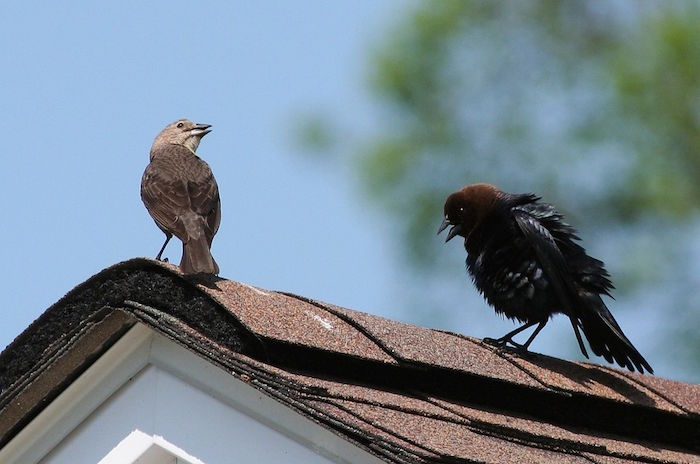
No comments yet.